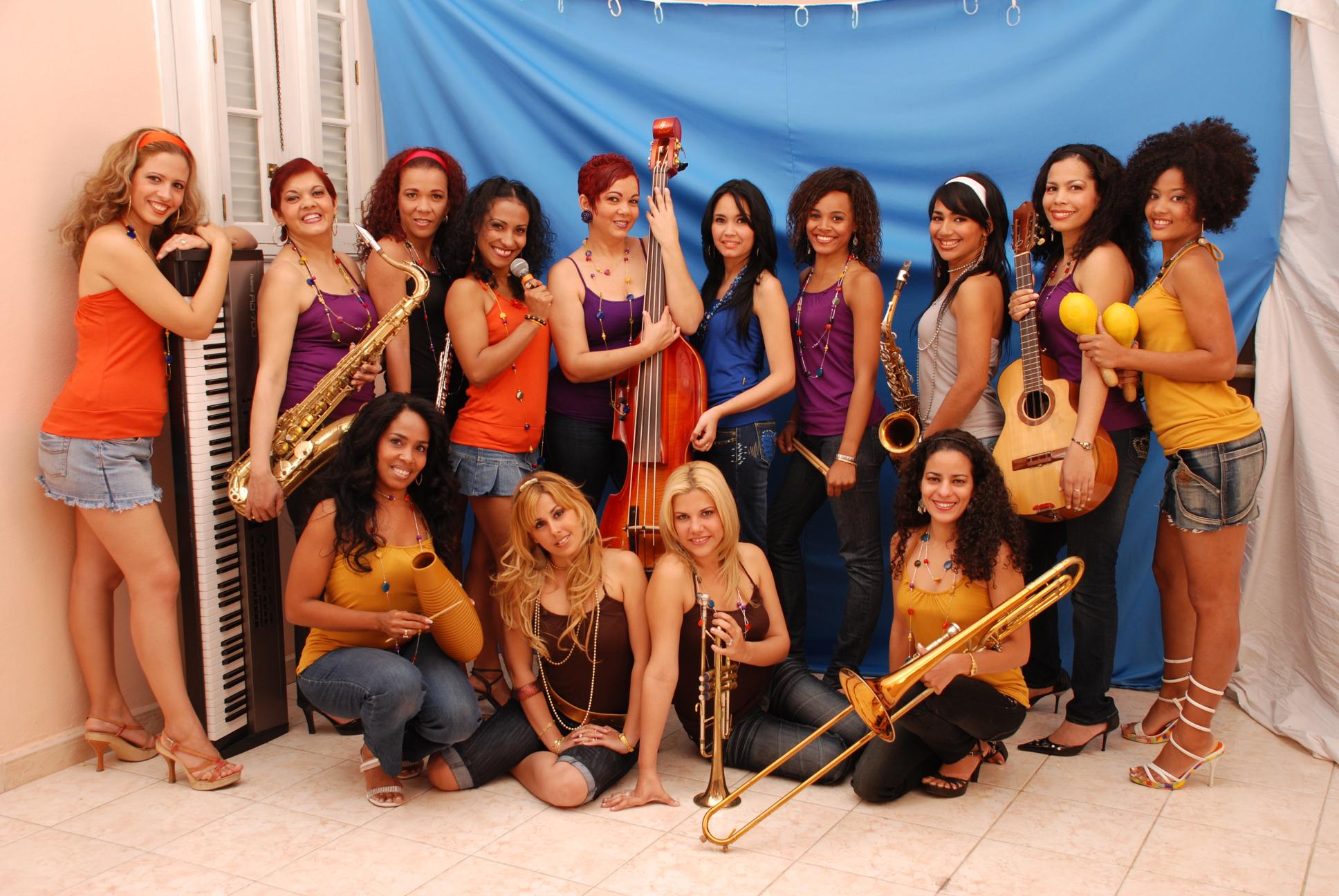10.7.1 Anacaona

Anacaona, a female orchestra of popular dance music; whose name means golden flower in the Taino language. It was founded by saxophonist Concepción Castro Zaldarriaga and her sisters Argimira (drums), Ada (tres, violin and trumpet), Caridad (double bass), Olga (saxophone, flute, clarinet and maracas), Alicia (saxophone, clarinet and double bass) and Ondina and Xiomara (trumpet), on February 19, 1932. Thus, the first female Son Sextet was formed.
They began playing at the El Dorado café, where puritanical society rejected them, but popular taste applauded them, thus creating a movement that was followed by other orchestras also made up of women in those years. In 1934, the group expanded to the format of a Jazz Band and Charanga Típica, performing internationally from the famous “Aires Libres del Hotel Saratoga” (Paseo del Prado No. 603, Old Havana, Havana City) in the Cuban capital.
Las Anacaona recorded three albums with RCA Victor between the 1940s and 1960s. They also toured numerous countries in the Americas, the Caribbean, and Europe, including France. Their images and sounds were captured in several Mexican films, such as “La noche es nuestra,” “No deniego mi pasado,” and “Mujeres de teatro,” in which they performed alongside Mexican film and music artists. During this period, the orchestra featured names such as Celia Cruz and Omara Portuondo.
Sisters Georgia and Dora Aguirre, both of whom had solid professional musical backgrounds and graduated from the Amadeo Roldán Conservatory, began working with the founders in 1983, under the direction of Alicia Castro, the second director, with whom they gained invaluable experience in the tradition and discipline of this work.
In December 1987, the Castro sisters retired, and Georgia Aguirre took over as director of the orchestra. Along with her sister and other young women who had also graduated from music schools, she continued the work begun by her predecessors.
The orchestra has performed at major festivals, including a 34-city tour of the People’s Republic of China; their participation in the play “El Burgués Tropical” under the direction of Gerome Sabarí; and the show “Sabor de la Habana,” which opened the Cuban performance season at the Cabaret du Grand Casino Monte Carlo in the Principality of Monaco. In August 1999, they toured several cities in the United States, where they also enjoyed a very emotional encounter with Graciela Pérez, singer and founder of Anacaona.
Las Anacaona have performed on the main stages of popular dance music in our country and have toured more than twenty countries in the Old Continent, Africa, Asia, and the Americas, including the Caribbean.
The female group has participated in the documentaries “La ruta del ritmo” by director Harry Belafonte, “Anacaona, 70 años después” by director Jorge Aguirre, produced by Cuban Television; as well as in several films such as “La Bella de la Alhambra” by director Enrique Pineda Barnet, “Vidas Paralelas” by Pastor Vega and the Cuban-Swiss co-production, “Barrio Negro”.
Currently, Anacaona is made up of more than a dozen women who cultivate Cuban popular music, blending traditional rhythms with contemporary sounds. They are also known as “Las Mulatísimas del Sabor” (The Mulatísimas of Flavor) and have been highly regarded by critics and dancers throughout Cuba and around the world.
In recent years, they have recorded five albums with labels such as PM Record, Lusafrica, and Bis Music, including “Como un milagro” (Like a miracle) and “No lo puedo evitar” (I can’t avoid it) (2008). They have also been invited to appear on productions for other labels, such as DISMEDI-España on Vol. II of “Cuba le canta a Serrat” (Cuba sings to Serrat), and to perform two classic Anglo-Saxon songs adapted to Cuban rhythms with English producer Kenny Young.
Anacaona strengthens a style that combines tradition with modernity, preserving and enhancing the history that enriches the orchestra. It is considered “Cuba’s Distinguished Women’s Orchestra” and remains one of Cuba’s great musical institutions. It is among the top-tier groups in Cuban popular music.








